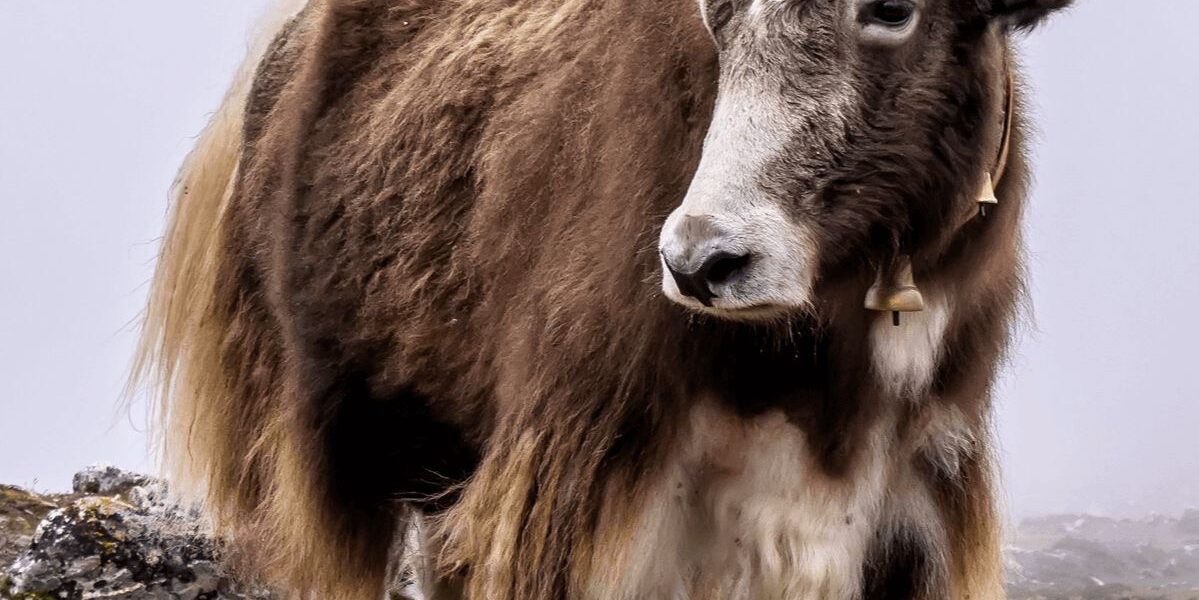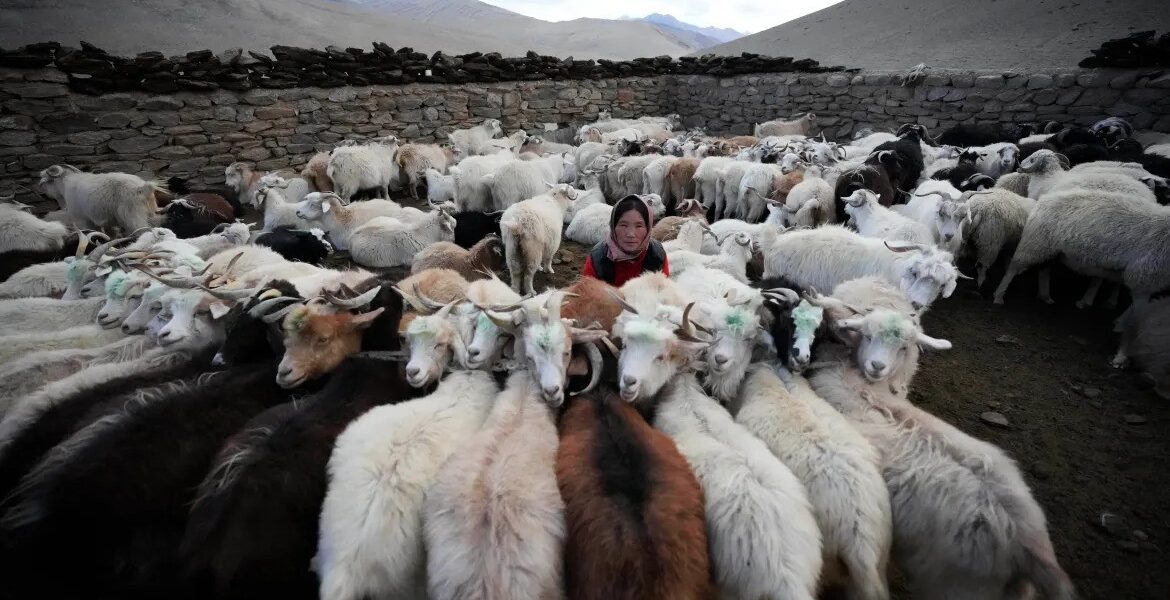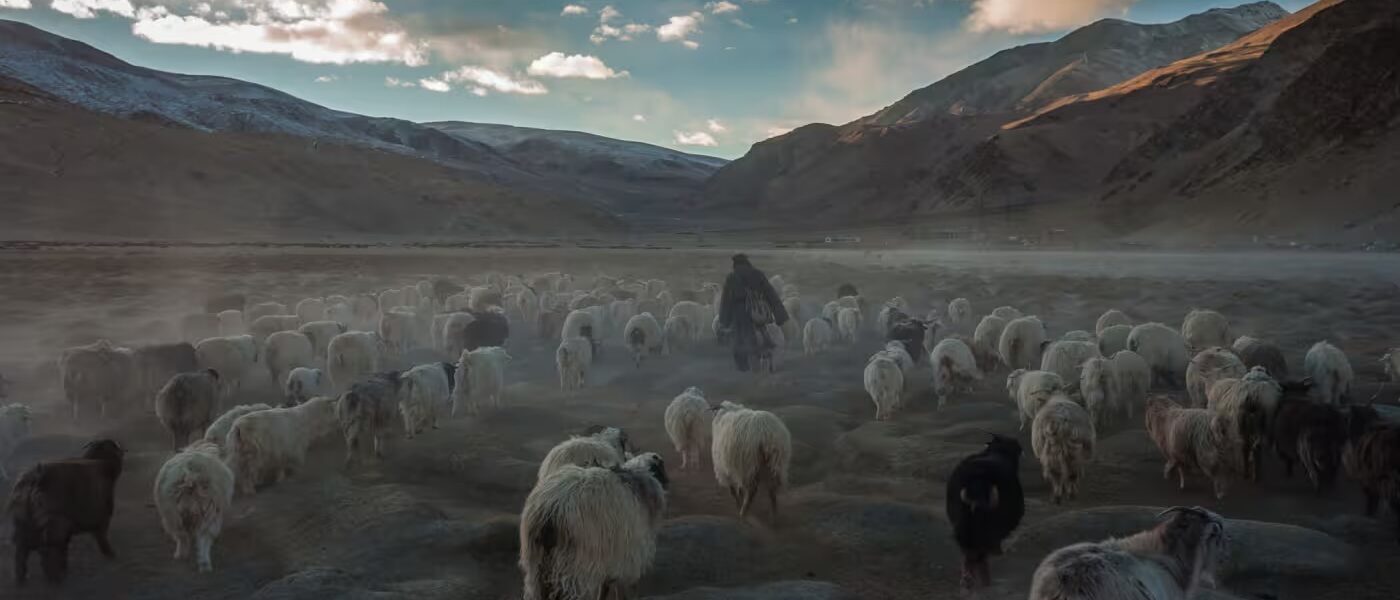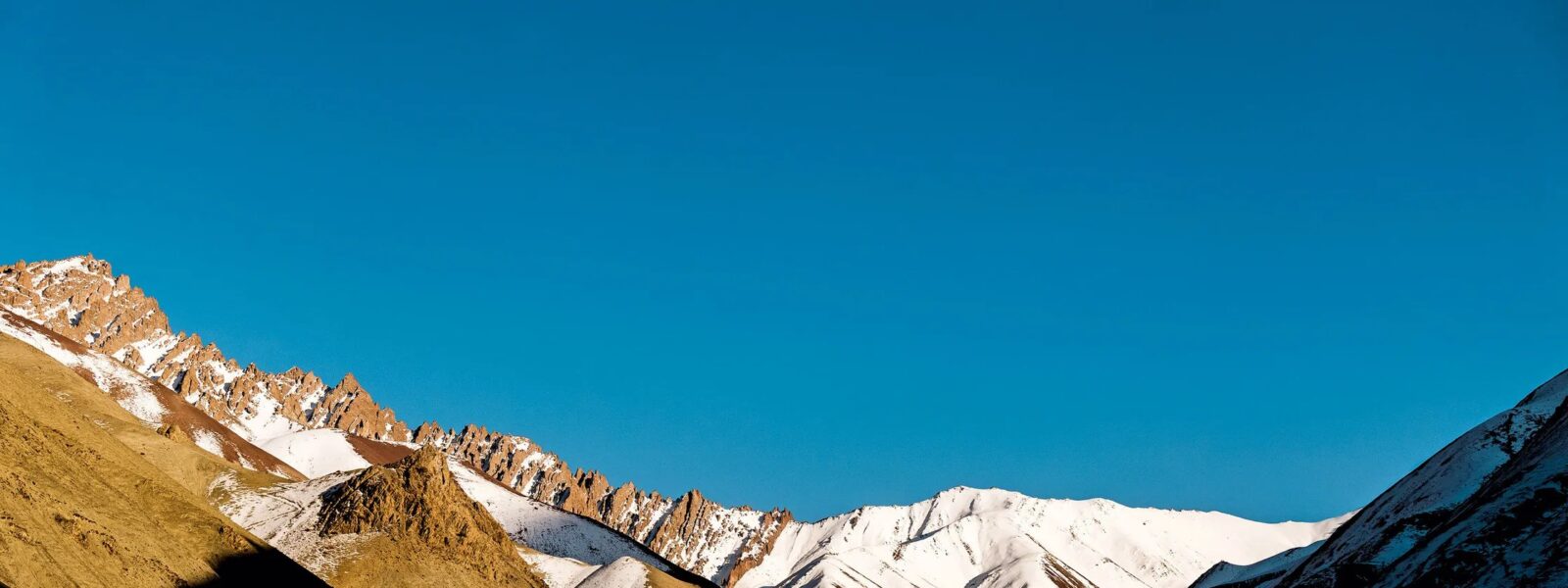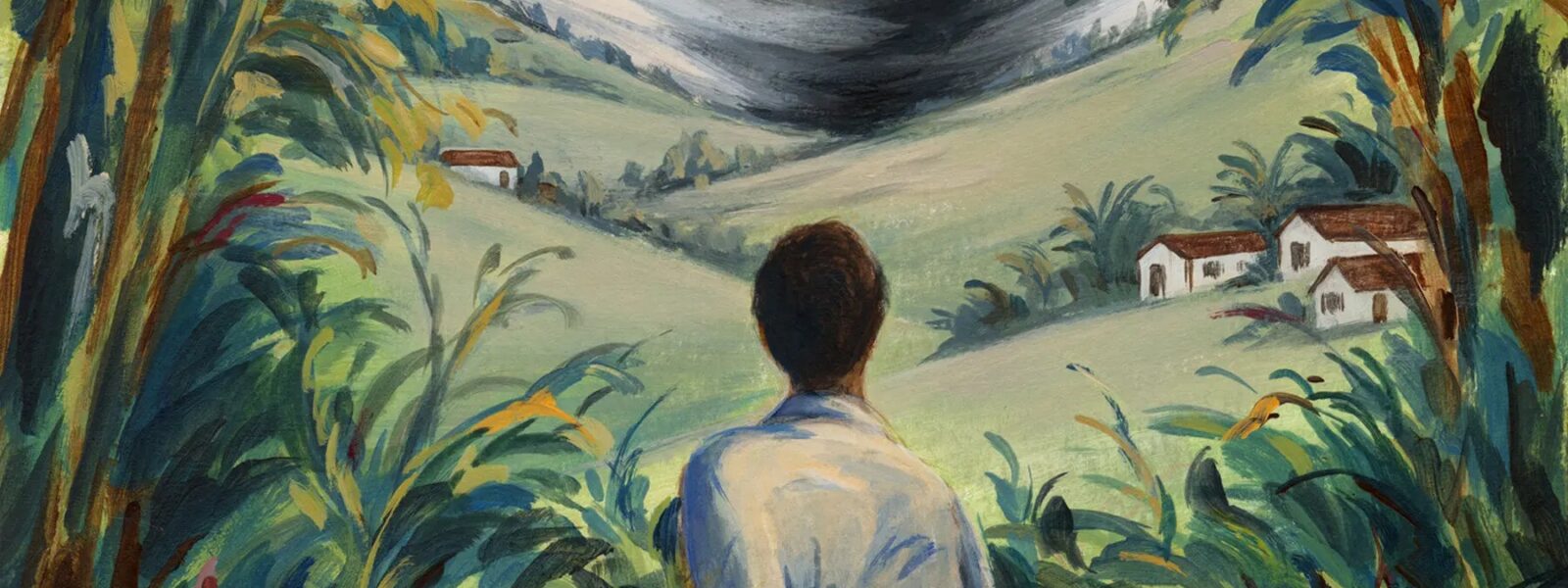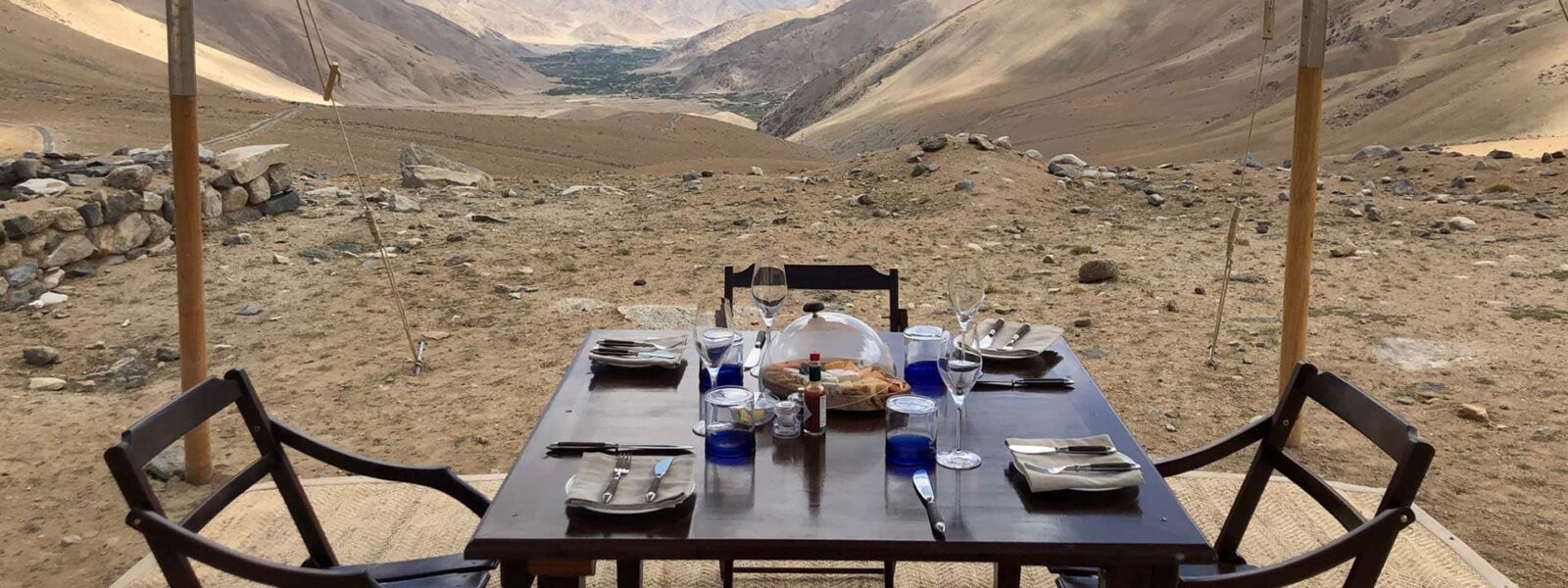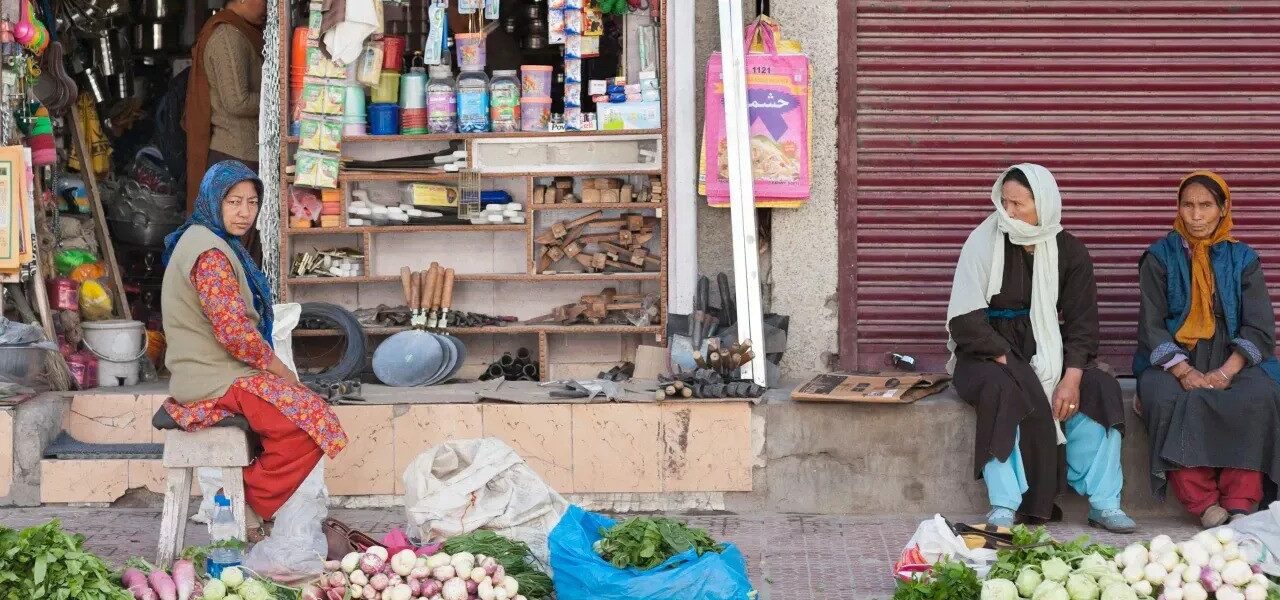Introduction: Discovering the Untamed Beauty of Ladakh
Ladakh, a remote region nestled in the northern reaches of India, beckons adventurers with its breathtaking Himalayan vistas, stark desert mountains, and a wild spirit that pulses through its rugged landscapes. Far from the bustling cities, this mystical land offers a trekking experience unlike any other, where the air hums with the promise of exploration and the trails whisper tales of ancient nomads. Imagine stepping into a world where yaks plod alongside you, their woolly forms blending with the vast wilderness, while the elusive mountain wolves roam the high plateaus, their howls echoing through the silence. This is Ladakh trekking at its finest—a journey into the untamed beauty of the Himalayas that stirs the soul of every nature lover and thrill-seeker. Here, the rugged terrain meets serene monasteries, and the call of Himalayan wildlife invites you to explore the wild heart of Ladakh. Whether you’re hiking through its scenic trails or marveling at its untouched landscapes, this adventure promises an escape into a realm where nature reigns supreme.
Why Ladakh Trekking Stands Out for Adventure Seekers
For those who crave adventure, Ladakh offers a Himalayan trekking experience that blends high-altitude challenges with raw, untamed beauty. It’s a destination where the thrill of trail exploration meets the serenity of untouched nature, drawing hikers from across the globe. The region’s unique mix of desert mountains and lush valleys creates a backdrop that’s both stark and mesmerizing, while its wildlife—think Himalayan predators and pack animals—adds an element of wonder to every step. Beyond the physical journey, Ladakh adventure travel taps into a deeper connection with the wilderness, offering a chance to walk alongside yaks and witness the primal essence of mountain wolves. From the cultural richness of Little Tibet to the rugged solitude of its high passes, Ladakh stands out as a trekking paradise that promises not just a trip, but a transformative quest into the heart of the Himalayas.
The Magic of Trekking with Yaks in the Himalayas
Trekking with yaks in the Himalayas is an experience that captures the essence of Ladakh’s wild heart. These sturdy Himalayan cattle, often called Tibetan oxen, have been integral to the region’s nomadic life for centuries, serving as pack animals for the Changpa nomads who roam the Changthang plateau. As you embark on a wilderness roaming expedition, the sight of these woolly carriers trudging through the desert mountains is nothing short of magical. Their rhythmic steps and gentle grunts become a comforting soundtrack to the high-altitude treks in Ladakh, where they carry supplies and lighten the load for weary hikers.
Unlike modern trekking gear, yaks embody a timeless tradition, their presence linking you to the rugged transporters of Ladakh’s past. On trails like the Markha Valley, yak caravans wind through narrow paths framed by towering peaks, their thick fur glistening under the Himalayan sun. Beyond their utility, yaks offer a cultural window into Ladakhi life—herded by nomads in colorful attire, they’re a living testament to survival in one of the harshest environments on Earth. For adventure seekers, this isn’t just hiking; it’s a journey with high-altitude companions that grounds you in the untamed spirit of the region.
The practical benefits of trekking with yaks in the Himalayas are undeniable. They navigate the rocky terrain with ease, allowing you to focus on the stunning vistas rather than the weight on your back. Whether you’re crossing high passes or camping under a starlit sky, these mountain beasts enhance the experience, making it accessible yet authentic. Photographers revel in capturing their silhouettes against the jagged skyline, while nature lovers appreciate the harmony of human, animal, and landscape. This blend of utility and charm makes yak-supported treks a highlight of Ladakh adventure travel, offering a soulful connection to the wilderness that’s hard to replicate elsewhere.
For those planning a Ladakh trekking tour with guides, yaks often come as part of the package, especially on remote trails where vehicles can’t reach. Their endurance in the thin air of the Himalayas—sometimes above 4,000 meters—ensures your journey remains smooth, even as the altitude tests your limits. As you walk alongside these nomadic livestock, you’ll feel the pulse of Ladakh’s untamed heart, a rhythm that’s echoed in the vastness of its landscapes and the simplicity of its people. It’s an adventure with purpose, where every step with these rugged companions deepens your appreciation for the Himalayan frontier.

Encountering Mountain Wolves: Ladakh’s Wild Predators
Spotting mountain wolves in Ladakh is a thrilling prospect that elevates any trekking experience into the realm of the extraordinary. Known as Tibetan wolves or Himalayan predators, these elusive wild canines roam the high plateaus of the Changthang region, their grayish coats blending seamlessly with the barren, rocky terrain. For wildlife enthusiasts, encountering these snow wolves on a Ladakh trail is a bucket-list moment—a rare glimpse into the untamed beauty of the region’s ecosystem. Unlike their more famous cousins, the snow leopards, mountain wolves are pack animals, their haunting howls piercing the stillness of the desert mountains.
These wilderness stalkers thrive in Ladakh’s harsh climate, where altitudes soar and prey like blue sheep and small mammals sustain them. Trekking Hemis National Park or the remote trails of the Zanskar range offers the best chances to spot them, especially during dawn or dusk when they’re most active. Their presence adds a layer of excitement to Himalayan trekking in Ladakh, turning a scenic hike into a wildlife adventure. Imagine pausing on a rugged path, binoculars in hand, as a pack moves silently across a distant ridge—their primal essence a stark contrast to the serene monasteries dotting the landscape.
To increase your odds of encountering Tibetan wolves, timing is key. The best trekking seasons in Ladakh—summer and early autumn—coincide with their hunting patterns, when clearer weather reveals their movements. Guides familiar with Changthang wildlife often share tales of past sightings, pointing out tracks or scat as evidence of their proximity. While they’re shy and rarely approach humans, their tracks near water sources or high passes hint at their unseen presence, fueling the thrill of the chase. This unpredictability is part of what makes Ladakh wildlife trekking so captivating—it’s a dance between patience and luck in the heart of the Himalayas.
For many, the allure of mountain wolves lies in their mystique. They embody the savage soul of Ladakh, a reminder of nature’s raw power amid its tranquil beauty. Photographers and nature lovers dream of capturing their fleeting forms, while hikers revel in the stories they’ll tell of hiking through Ladakh’s rugged terrain with these high-altitude wolves nearby. Even if you don’t see them, their presence lingers in the air, a testament to the untamed heart of this Himalayan frontier. It’s an experience that blends adventure with reverence, making every step a tribute to Ladakh’s wild predators.
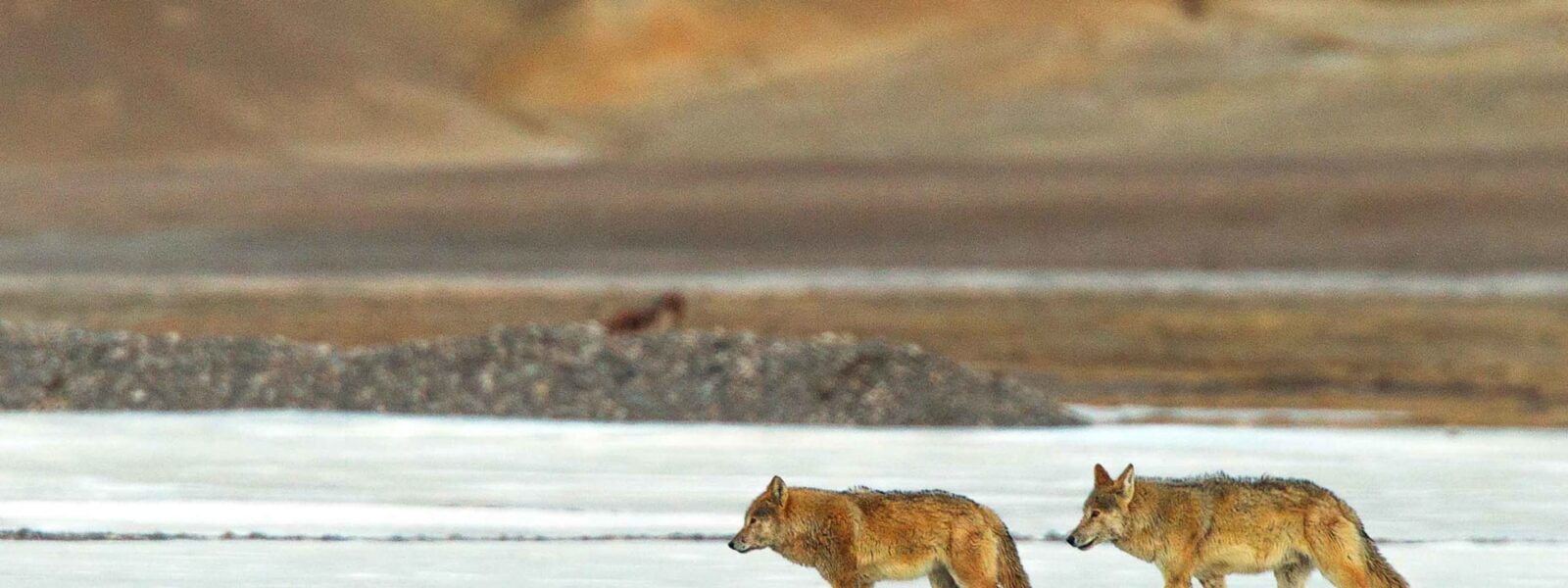
The Blend of Wilderness and Culture in Ladakh
Ladakh trekking near monasteries offers a unique fusion of wilderness and culture, setting it apart from other Himalayan adventures. As you hike through the desert mountains, the sight of ancient Buddhist monasteries perched on rocky outcrops adds a spiritual dimension to the journey. These ochre-and-white structures, often centuries old, are more than landmarks—they’re living hubs of Ladakhi culture, where monks chant prayers and prayer flags flutter against the wind. This juxtaposition of untamed nature and human tradition creates a soulful trekking experience that resonates with explorers seeking both serenity and thrill.
The trails of Little Tibet, as Ladakh is affectionately called, weave past these sacred sites, offering glimpses into a way of life shaped by the Himalayas. On the Markha Valley trek, for instance, you might camp near the Hemis Monastery, its golden spires glowing in the twilight as yaks graze nearby. This blend of wilderness roaming and cultural immersion is a hallmark of Ladakh adventure travel, where every step reveals a story. The Changpa nomads, with their yak herds and colorful tents, further enrich the experience, their nomadic lifestyle a bridge between the rugged terrain and human resilience.
Unlike purely nature-focused treks, Ladakh’s trails invite you to pause and reflect. Monasteries like Thiksey or Lamayuru aren’t just photo stops—they’re invitations to engage with the mystic journeys of the region’s people. Trekkers often hear the low hum of chants or the ringing of bells, a reminder that this wilderness pulse beats alongside a deep spiritual heritage. For those hiking through Ladakh’s rugged terrain, these cultural encounters add depth, turning a physical expedition into a quest for understanding. It’s a chance to witness how the untamed spirit of the landscape has shaped the lives of those who call it home.
This harmony of nature and tradition makes Ladakh trekking a standout choice for adventure seekers. Whether you’re marveling at a monastery’s intricate murals or sharing tea with a nomad, the experience transcends the trail itself. The rugged beauty of the desert mountains meets the warmth of human connection, creating memories that linger long after the journey ends. For nature lovers and cultural explorers alike, this blend is the heart of Ladakh’s appeal—a wild, yet grounded adventure that celebrates both the Himalayan frontier and its timeless inhabitants.
Best Trekking Routes in Ladakh for Wildlife and Nature Lovers
For wildlife enthusiasts and nature lovers, the best treks in Ladakh offer a front-row seat to the region’s untamed beauty. These scenic trekking routes in the Himalayas wind through desert mountains, lush valleys, and high plateaus, revealing a world where Himalayan wildlife thrives. From yak-supported trails to paths teeming with rare animals, Ladakh’s wilderness offers hiking journeys that blend adventure with awe. Below, we explore three standout routes—Markha Valley, Hemis National Park, and Nubra Valley—each showcasing the wild heart of Ladakh in its own unique way, perfect for those eager to explore nature trails and rugged landscapes.
Markha Valley: A Journey with Yaks and Blue Sheep
Trekking Markha Valley with yaks is a quintessential Ladakh experience, blending trail exploration with the region’s iconic pack animals. This scenic route stretches through the heart of the Himalayas, offering sweeping views of jagged peaks and emerald rivers framed by desert mountains. As you hike, yaks—those woolly carriers of the Changpa nomads—accompany you, their steady pace a comforting presence on the rugged terrain. The trail, often tackled over 7–10 days, winds through remote villages and high passes, making it a favorite for those seeking an authentic Himalayan adventure.
One of the highlights of the Markha Valley trek is the chance to spot blue sheep, known locally as bharal, grazing on steep slopes. These agile creatures, with their slate-blue coats, are a common sight for trekkers, especially near the Nimaling Plateau, where the landscape opens into vast grazing grounds. Their presence adds a wildlife thrill to the journey, complementing the yaks that plod alongside. Nature lovers will also revel in the untouched landscapes—think golden barley fields, towering cliffs, and the occasional glimpse of a distant monastery, all painting a picture of Ladakh’s wild beauty.
The logistics of this trek enhance its appeal. Starting near Leh, the route ascends gradually, giving you time to acclimate to the high-altitude treks in Ladakh. Campsites along the Markha River offer serene nights under a starlit sky, with the sound of rushing water lulling you to sleep. For those on guided Ladakh trekking tours, yaks carry tents and supplies, freeing you to soak in the scenery. The trail’s remoteness—far from crowded tourist hubs—ensures a sense of solitude, amplifying the wilderness pulse that defines this Himalayan frontier. Whether you’re crossing the Kongmaru La pass at 5,200 meters or pausing to photograph a yak caravan, every moment feels like a step into Ladakh’s untamed heart.
For adventure seekers, the Markha Valley trek delivers on multiple fronts. It’s challenging yet rewarding, with diverse flora and fauna that shift as you climb. The blue sheep, while not as elusive as snow leopards, are a delight to observe, their nimble movements a testament to life in these rugged mountains. Photographers and hikers alike find endless inspiration here, from the stark beauty of the desert peaks to the quiet resilience of the nomads. This journey with yaks and blue sheep is a perfect introduction to Ladakh wildlife trekking, offering a blend of nature, culture, and adventure that’s hard to beat.

Hemis National Park: Home of Snow Leopards and Wolves
Trekking Hemis National Park in Ladakh is a dream for wildlife enthusiasts, offering a chance to step into the habitat of snow leopards and mountain wolves. Spanning over 4,400 square kilometers, this high-altitude park is one of the largest in India, its rugged terrain a sanctuary for some of the Himalayas’ most elusive predators. Known as the “snow leopard capital of the world,” Hemis is a beacon for those eager to explore Ladakh wildlife trekking, where the thrill of spotting Himalayan predators like Tibetan wolves adds an edge to every hike. The park’s vastness, cradled by desert mountains, makes it a true wilderness roaming experience.
The snow leopard, with its ghostly gray fur and piercing eyes, is the park’s crown jewel. While sightings are rare due to their solitary nature, the possibility keeps trekkers on edge, scanning rocky outcrops and high ridges. More frequently encountered are the mountain wolves, or snow wolves, whose packs roam the Changthang plateau within Hemis. Their haunting calls echo through the stillness, a reminder of the savage soul that thrives in this untamed landscape. Trekking here, especially along routes like the Rumbak Valley, immerses you in a world where nature reigns supreme, far from the bustle of modern life.
The park’s trails cater to both seasoned hikers and nature lovers. Starting from villages like Rumbak or Zingchen, the paths climb through juniper forests and open meadows, offering stunning views of the Zanskar range. The high passes of Ladakh, like Ganda La at 4,900 meters, test your endurance, but the rewards are worth it—panoramas of desert mountains and the chance to spot rare wildlife like blue sheep or Himalayan marmots. Guided Ladakh adventure travel packages often include Hemis, with local experts pointing out signs of snow leopards (pugmarks, scat) or wolf activity, enriching the journey with their knowledge of Changthang wildlife.
Beyond its fauna, Hemis National Park captivates with its raw beauty. The stark contrast of snow-capped peaks against arid plains creates a surreal backdrop, while the Hemis Monastery—a cultural gem within the park—adds a spiritual layer to the trek. For those seeking serenity in the mountains, this blend of wildlife encounters and untouched nature is unparalleled. Whether you’re a photographer aiming to capture a snow leopard’s silhouette or a hiker reveling in the wild heart of Ladakh, Hemis delivers an expedition that’s as challenging as it is awe-inspiring, cementing its place among the best treks in Ladakh.
Nubra Valley: Desert Mountains and Rugged Trails
Hiking through Ladakh’s rugged terrain takes on a new dimension in the Nubra Valley, where desert mountains and scenic trails create a trekking experience unlike any other. Known as the “Valley of Flowers,” Nubra sits at a lower altitude than much of Ladakh, its sandy expanses and lush oases offering a striking contrast to the high-altitude treks elsewhere. Here, the wild beauty of the Himalayas unfolds in a unique blend of arid landscapes and verdant patches, with yaks and rare wildlife adding to the allure. For nature lovers, Nubra Valley trekking is a journey into Ladakh’s untamed heart, where the desert meets the divine.
The trails of Nubra Valley wind through a surreal landscape—think towering sand dunes flanked by snow-capped peaks, with the Shyok River carving a shimmering path below. Trekking here often begins near Diskit, home to a famous monastery, and extends into remote corners where yak caravans still roam. These Himalayan cattle, herded by locals, traverse the rugged terrain with ease, their presence a nod to the region’s nomadic heritage. Along the way, you might spot Bactrian camels—remnants of ancient trade routes—or Himalayan marmots scurrying across the plains, making this a wildlife trekking adventure with a twist.
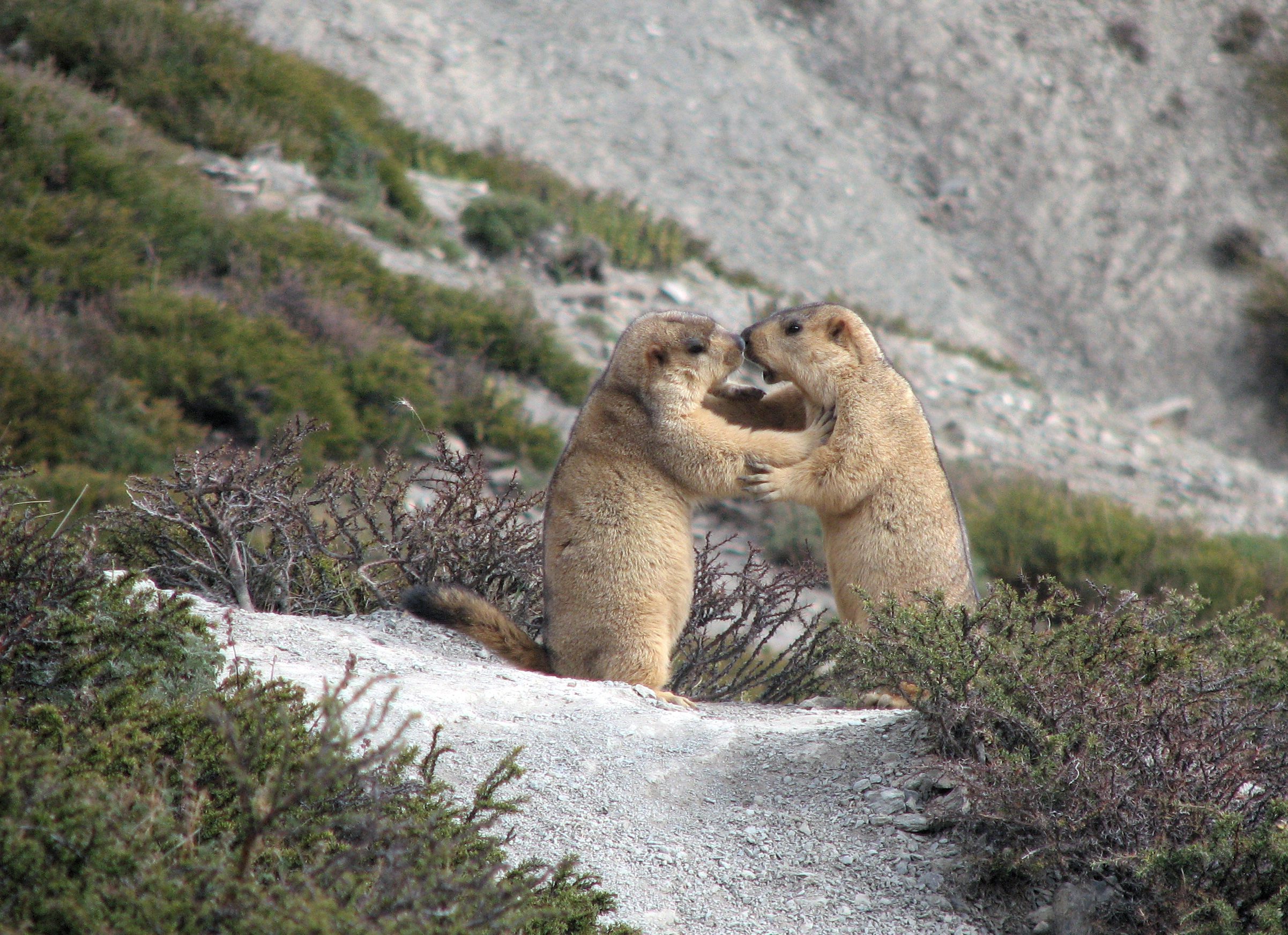
One of the standout routes is the trek from Hunder to Turtuk, a multi-day journey that showcases Nubra’s diversity. The path climbs through rocky passes and descends into villages where apricot trees bloom, offering a taste of Ladakh’s untouched landscapes. The desert mountains loom large, their starkness softened by the occasional sight of a yak herd or a distant wolf silhouette. For those seeking serenity in the mountains, Nubra’s quieter trails provide a respite from the more crowded routes, letting you soak in the wilderness pulse at your own pace. The lower altitude—around 3,000 meters—also makes it more accessible for casual hikers.
Nubra Valley’s rugged trails appeal to photographers and adventurers alike. The play of light on the desert peaks, the shimmer of the river, and the chance to witness Himalayan wildlife make every step a visual feast. Guided Ladakh trekking tours often include Nubra for its unique charm, with local guides sharing tales of the valley’s history as a Silk Road outpost. Whether you’re camping under a canopy of stars or marveling at the resilience of life in this arid frontier, Nubra Valley offers a trekking experience that celebrates the untamed spirit of Ladakh’s desert mountains, blending nature’s rawness with subtle beauty.
Planning Your Ladakh Wildlife Trekking Adventure
Ladakh wildlife trekking is more than a hike—it’s an expedition into the Himalayan frontier, where preparation is key to unlocking its wild heart. From choosing the right season to packing for high-altitude challenges, planning ensures you experience the best of Ladakh’s nature trails and rugged landscapes. Whether you’re drawn to the yaks plodding through desert mountains or the thrill of spotting mountain wolves, this section offers practical insights to turn your Himalayan adventure into reality. Below, we dive into the essentials, helping you craft a journey that’s as seamless as it is unforgettable.
Best Time for Trekking in Ladakh
Trekking in Ladakh during summer is widely considered the ideal time to explore its untamed beauty, with June to September offering the best window for walking journeys. During these months, the Himalayan treks come alive—snow melts from the trails, rivers flow freely, and the desert mountains bloom with subtle greenery. Temperatures range from 15°C to 25°C in the day, dropping to near-freezing at night, creating a comfortable climate for hiking through Ladakh’s rugged terrain. This season aligns with clearer skies, making it easier to spot Himalayan wildlife like Tibetan wolves and blue sheep, a key draw for nature lovers.
Summer also coincides with the peak trekking season in Ladakh, when high passes like Kongmaru La or Ganda La are accessible. These routes, often impassable in winter due to heavy snow, open up to reveal stunning vistas and yak-supported trails. For wildlife enthusiasts, this period increases the chances of encountering snow leopards or mountain wolves, as they descend to lower altitudes in search of prey. The vibrant festivals of Ladakh, like Hemis Tsechu in June, add a cultural layer to your adventure, with monasteries buzzing with activity. It’s a time when the wild heart of Ladakh pulses strongest, blending nature and tradition into a seamless experience.
Early autumn, particularly September, offers a quieter alternative. The crowds thin out, yet the weather remains stable, with crisp air and golden hues painting the landscape. This shoulder season is perfect for those seeking serenity in the mountains, as the trails feel more remote and the wildlife remains active before winter sets in. Monsoon rains, which plague other parts of India, rarely reach Ladakh’s arid plateau, ensuring your Himalayan adventure stays dry and enjoyable. Whether you’re tackling the Markha Valley or exploring Hemis National Park, summer and early autumn provide the optimal backdrop for Ladakh adventure travel.
For planning purposes, avoid winter (October to May) unless you’re an expert trekker equipped for sub-zero conditions. The region transforms into a frozen wonderland, but most trails close, and wildlife retreats to inaccessible heights. Summer, with its long days and open paths, remains the sweet spot for most adventurers. Check local weather updates and consult guides for real-time conditions, as high-altitude treks in Ladakh can shift with sudden storms. By timing your trip right, you’ll unlock the full splendor of Ladakh’s wilderness, from its scenic trails to its untamed inhabitants.
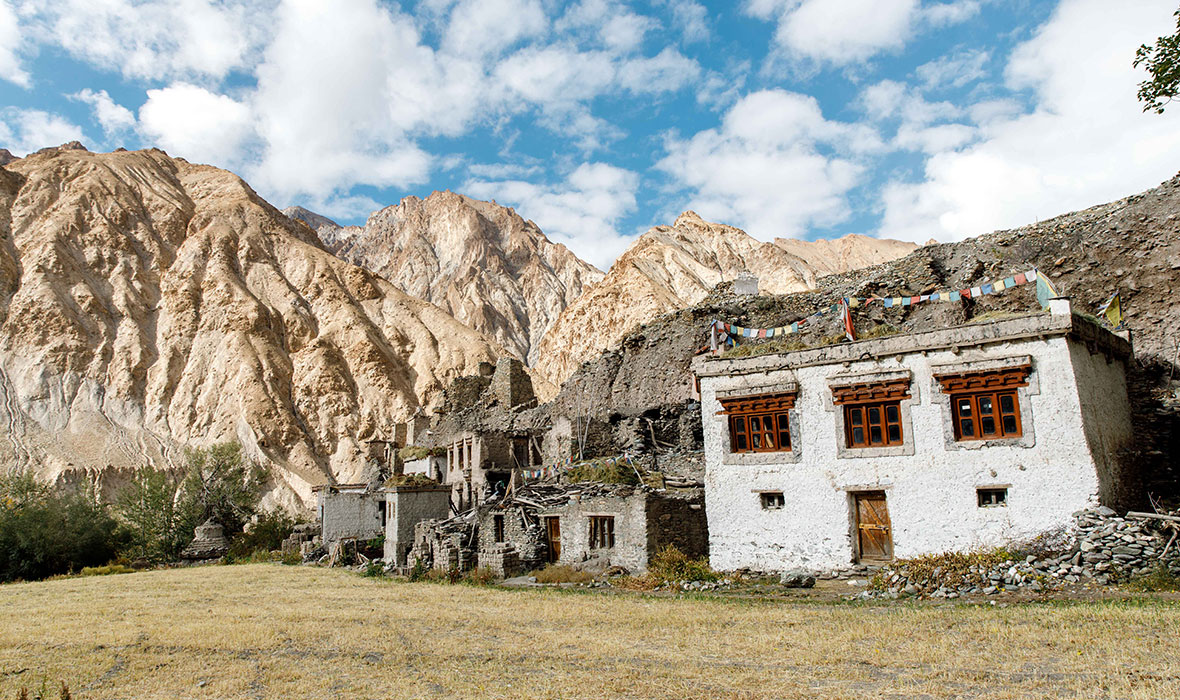
What to Pack for High-Altitude Treks in Ladakh
Backpacking for high-altitude treks in Ladakh demands careful planning, as the region’s desert mountains and thin air present unique challenges. At elevations often exceeding 4,000 meters, the climate swings from scorching days to frigid nights, requiring gear that balances warmth, weight, and versatility. Start with a layered clothing system: a moisture-wicking base layer, an insulating fleece, and a windproof, waterproof jacket. These essentials keep you comfortable whether you’re hiking through Ladakh’s rugged terrain or pausing to spot Himalayan predators. Add thermal leggings and a down jacket for nights, when temperatures can plummet below zero.
Footwear is non-negotiable—invest in sturdy, waterproof trekking boots with ankle support to handle the rocky trails of the Himalayan frontier. Pair them with wool socks and gaiters to protect against dust and scree, especially on routes like Nubra Valley. A wide-brimmed hat and UV-protective sunglasses shield you from the intense sun, while a buff or scarf guards against windblown sand—a common feature of desert mountains. For those chasing wildlife encounters, pack binoculars and a lightweight camera with a zoom lens to capture snow leopards or mountain wolves from a distance without adding bulk.
Your backpack should include survival basics: a high-quality sleeping bag rated for sub-zero temperatures, a lightweight tent (if not using guided Ladakh trekking tours), and a portable stove for hot meals. Hydration is critical—carry a 3-liter water bladder and purification tablets, as streams may be scarce on remote trails. High-energy snacks like nuts, dried fruit, and energy bars fuel your Himalayan treks, while a first-aid kit with altitude sickness medication (like Diamox) prepares you for the thin air. Trekking poles ease the strain on steep ascents and descents, a must for routes with high passes.
Don’t overlook extras that enhance the experience. A journal captures the mystic journeys of Ladakh’s wild heart, while a solar charger keeps devices powered for navigation or photography. Pack biodegradable toiletries to respect the untouched landscapes, and include a headlamp for early starts—perfect for spotting Tibetan wolves at dawn. With altitudes testing your limits, acclimatization gear like a pulse oximeter can monitor oxygen levels. This comprehensive kit ensures you’re ready for the wilderness pulse of Ladakh, blending practicality with the thrill of adventure in one of the world’s most rugged regions.
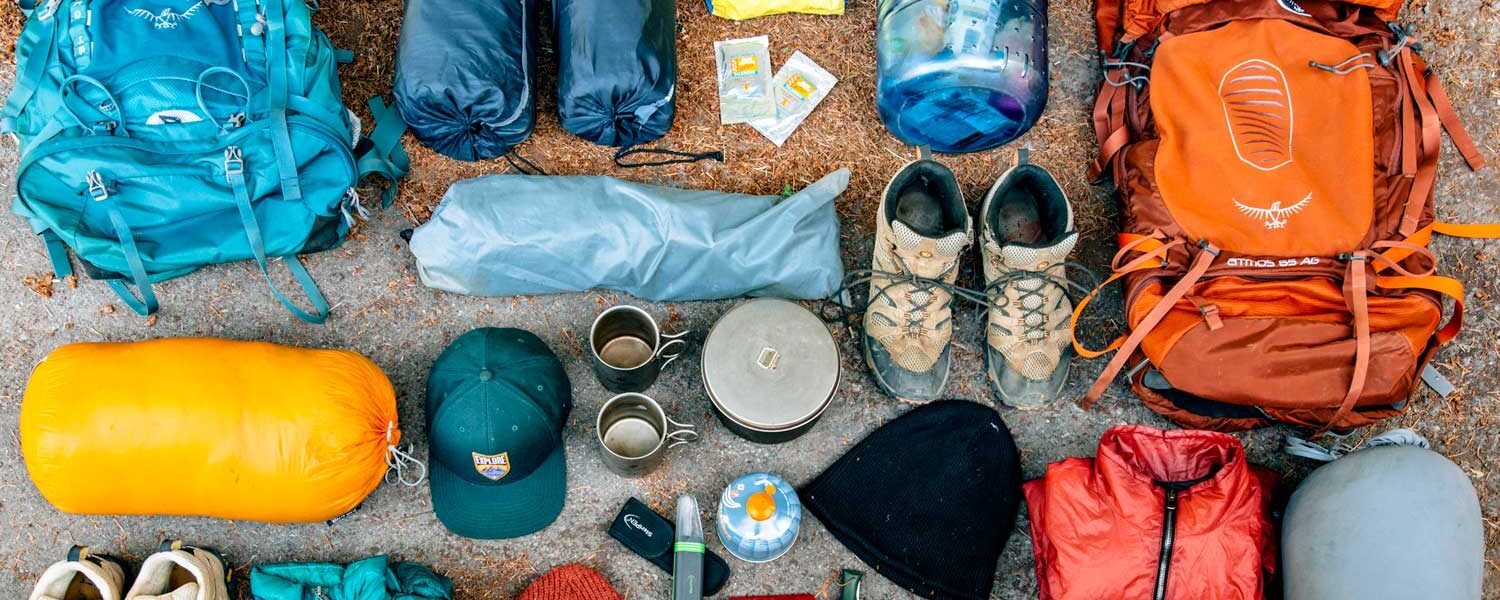
Tips for Spotting Wildlife on Ladakh Trails
Spotting the rare wildlife of Ladakh treks is a highlight of any Himalayan adventure, turning a hike into a thrilling quest for Changthang wildlife. From the elusive snow leopards to the pack-roaming mountain wolves, Ladakh’s trails teem with creatures that embody its untamed spirit. Success requires strategy, patience, and a keen eye—here’s how to maximize your wildlife encounters. Start by timing your trek for dawn or dusk, when animals like Tibetan wolves and blue sheep are most active, foraging or hunting in the cool hours before the sun peaks over the desert mountains.
Location matters—focus on trails known for biodiversity, like Hemis National Park or the Changthang plateau. These areas, rich with prey and water sources, draw Himalayan predators like snow leopards and wolves. Move quietly and avoid bright clothing; muted tones blend with the rugged terrain, reducing your visibility to wary creatures. Binoculars are your best friend—scan ridges, cliffs, and open plains where wildlife might perch or roam. Local guides, steeped in Ladakh wildlife trekking lore, can point out subtle signs: paw prints in the dust, scat near streams, or the faint rustle of a marmot darting into its burrow.
Weather plays a role too. Clear days during the summer trekking season in Ladakh offer the best visibility, though light cloud cover can coax animals into the open. Avoid noisy groups—solo or small-party treks increase your odds of a sighting, as wildlife shies away from human clamor. Patience is key; set up near a vantage point, like a high pass or riverbank, and wait. A snow leopard might slink across a rocky slope, its spotted coat camouflaging it against the stone, while mountain wolves may appear as fleeting shadows on a distant ridge, their howls a haunting bonus.
Enhance your experience with preparation. Study the habits of Ladakh’s rare animals—wolves hunt in packs, while snow leopards stalk alone—and carry a field guide to identify tracks or birds like the Himalayan griffon. Respect their space; maintain a safe distance to avoid disturbing their natural rhythm. For photographers, a telephoto lens captures these wilderness stalkers without intrusion, preserving the serenity in the mountains. These tips transform your hike into a soulful journey, where every glimpse of Ladakh’s untamed inhabitants—be it a yak herd or a wolf pack—deepens your connection to its wild heart.
Conclusion: Embrace the Wild Spirit of Ladakh
Himalayan trekking in Ladakh is more than a physical journey—it’s an embrace of the untamed heart that defines this northern wilderness. From the rhythmic plod of yaks along desert mountains to the fleeting shadows of mountain wolves against the horizon, every moment on these trails reveals the rugged beauty of the region. The best treks in Ladakh, like Markha Valley, Hemis National Park, and Nubra Valley, weave together scenic trails, Himalayan wildlife, and the quiet strength of Ladakhi culture. It’s a land where serenity in the mountains meets the thrill of adventure, offering a rare chance to disconnect from the mundane and reconnect with nature’s primal essence.
As you plan your Ladakh adventure travel, let the wild spirit of Little Tibet inspire you. The trails beckon with promises of untouched landscapes and soulful encounters, whether it’s a yak caravan crossing a high pass or the distant howl of a Tibetan wolf. This is a place where the wilderness pulse beats strong, inviting you to explore, reflect, and marvel. Pack your gear, lace up your boots, and step into the mystic journeys of Ladakh—your Himalayan escape awaits, ready to etch its rugged beauty into your memory forever.
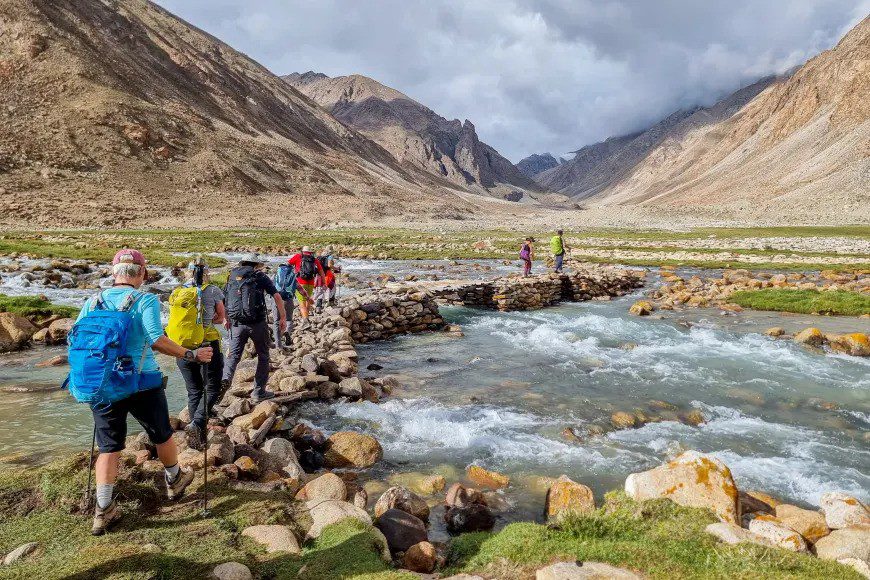
FAQs About Ladakh Trekking
What Are the Best Treks in Ladakh?
The best treks in Ladakh cater to a range of adventurers, blending Himalayan wildlife with scenic trails. Markha Valley stands out for its yak-supported paths and blue sheep sightings, offering a 7–10-day journey through desert mountains and remote villages. Hemis National Park, a haven for snow leopards and mountain wolves, delivers a rugged wilderness roaming experience, ideal for wildlife enthusiasts tackling routes like Rumbak Valley. Nubra Valley, with its desert landscapes and lush oases, provides a unique trek past monasteries and yak herds, perfect for nature lovers seeking serenity. Each route showcases Ladakh’s untamed heart, making them top picks for Himalayan trekking in Ladakh.
How Can I Spot Mountain Wolves in Ladakh?
Spotting mountain wolves in Ladakh requires timing, location, and stealth. Trek during summer or early autumn, hitting trails like Hemis National Park or Changthang at dawn or dusk when these Himalayan predators hunt. Move quietly in muted clothing, using binoculars to scan ridges and plains for their grayish forms. Local guides enhance your odds, pointing out tracks or howls that signal their presence. Patience is crucial—wait near water sources or high passes for a glimpse of these wilderness stalkers, respecting their space to preserve the wild beauty of Ladakh’s rugged terrain.
What Should I Pack for a Ladakh Trek?
Packing for a Ladakh trek means preparing for high-altitude treks in Ladakh’s desert mountains. Layered clothing—base layers, fleece, and a windproof jacket—handles temperature swings, while trekking boots and wool socks tackle rugged trails. Binoculars and a camera capture wildlife encounters, and a sub-zero sleeping bag ensures warm nights. Carry a water bladder, energy snacks, and a first-aid kit with altitude meds. Trekking poles and a solar charger round out your gear, keeping you ready for the untamed spirit of the Himalayan frontier.
Your Next Adventure Awaits
Ready to dive into the wild heart of Ladakh? Whether it’s trekking with yaks or chasing the thrill of spotting mountain wolves, this Himalayan paradise is calling. Plan your journey today—book a guided tour, map your route, or simply gather your gear—and step into the untouched landscapes of Little Tibet. The trails are waiting, and the wilderness is yours to explore. Start your adventure now and let Ladakh’s rugged beauty leave its mark on you!

